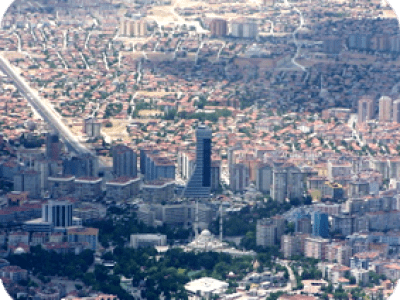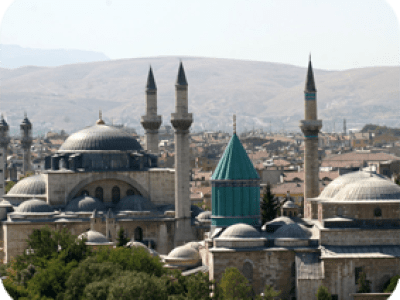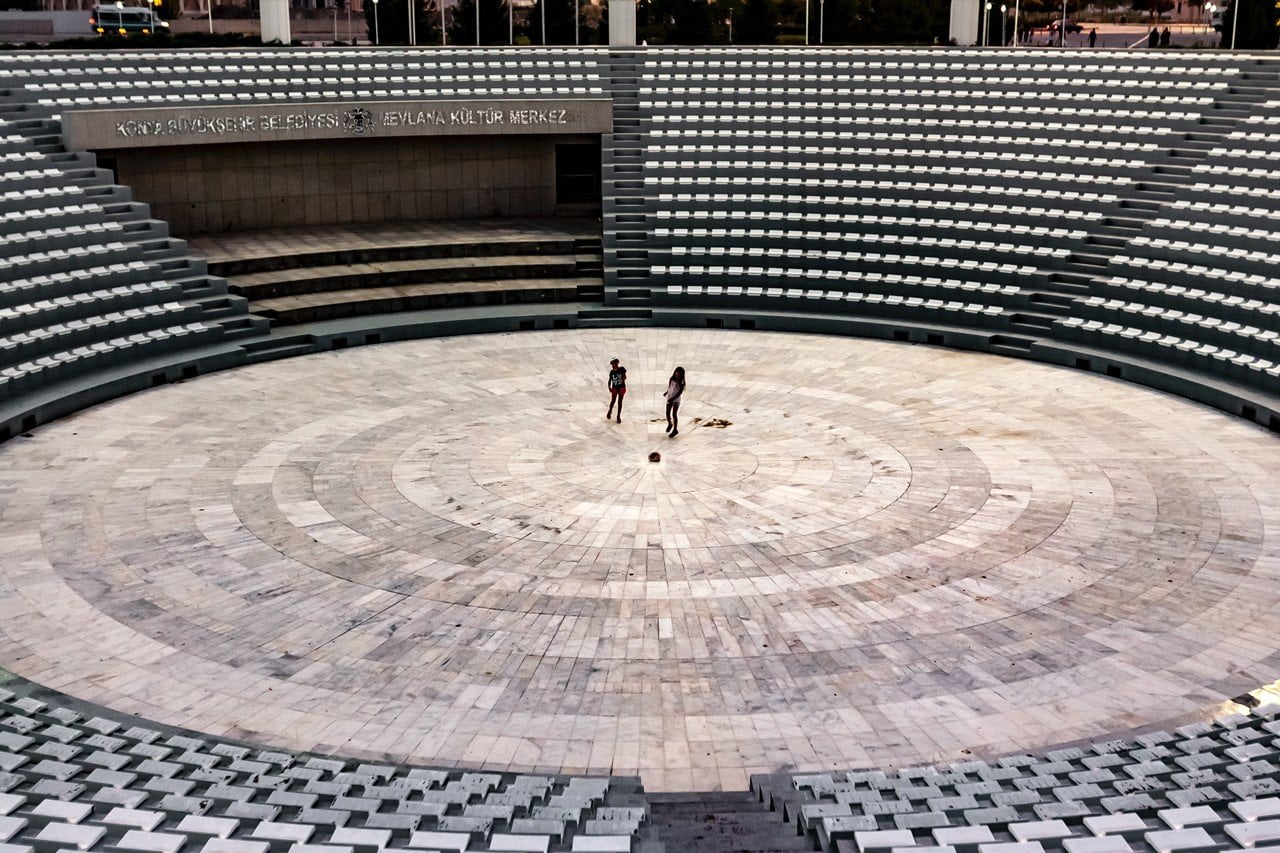KONYA (ICONIUM)
Konya, one of Turkey’s oldest continuously inhabited cities was known as Iconium in Roman times. The capital of the Seljuk Turks from the 12th to the 13th century, it ranks as one of the great cultural centers of Turkey. During this period of artistic, political and religious growth, the mystic Mevlana Celaleddin Rumi founded a Sufi Order known in the West as the Whirling Dervishes. The striking green tiled mausoleum of Mevlana is Konya’s most famous building. Attached to the mausoleum the former dervish seminary serves now as a museum devoted to manuscripts of Mevlana’s works and various artifacts related to the mysticism of the sect. Every year, in the first half of December, this still active religious order holds a ceremony commemorating the Whirling Dervishes. The controlled, almost trance-like turning of the white robed men creates a mystical experience for the viewer. Alaeddin Mosque, built on the site of the ancient citadel in 1220 during the reign of the great Seljuk sultan Alaeddin Keykubat, commands Konya’s skyline. To one side of the mosque are the scant remains of the Seljuk Imperial Palace. The Karatay Medrese, now a museum, displays bold and striking Seljuk ceramics. On the other side of the mosque the Ince Minareli Medrese of 1258 is remarkable for its marvelous baroque Seljuk portal. Other Seljuk works include the Sirgali Medrese and the Sahip Ata Complex. Visitors find Konya’s Archaeological Museum of exceptional interest. The collection of the Koyunoglu Museum is a varied one, and among its displays one is devoted to natural history while another to old kilims. Within the museum complex the restored Izzettin Koyunoglu house illustrates the way of life of a prosperous Konya family. Sille, 10 km north of Konya, has a Byzantine church and several rock chapels with frescoes.




0 Comment